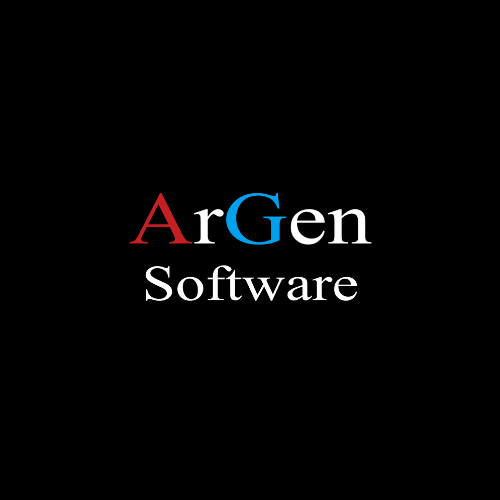In today’s digital landscape, the power of an effective online presence cannot be overstated. Whether you’re a budding entrepreneur, a seasoned business owner, or a content creator, understanding SEO (Search Engine Optimization) is crucial to unlocking your potential and reaching your audience. But what exactly is SEO, and how can you leverage its different types to your advantage? This blog post will guide you through the maze of SEO, breaking down its various forms and offering practical insights to enhance your online visibility.
This comprehensive guide is crafted with you in mind, aiming to demystify SEO and its components. We’ll unravel the mysteries of on-page, off-page, and technical SEO, providing you with actionable tips that cater directly to your needs. By the end of this post, you’ll have a clear understanding of how to implement SEO strategies effectively, ensuring that your website stands out in the crowded online space. Ready to boost your online presence? Let’s dive in!
The Essence of SEO
SEO, or Search Engine Optimization, is a digital marketing practice focused on increasing the quantity and quality of traffic to your website through organic search engine results. At its core, SEO is about understanding what people are searching for online, the answers they seek, the keywords they’re using, and the type of content they wish to consume. Having a strong SEO strategy in place not only helps in driving traffic but also builds brand authority and trust with your audience.
The importance of SEO is underscored by the staggering number of internet users who rely on search engines to find information. Every day, billions of searches are conducted on platforms like Google, demonstrating the potential reach of effective SEO tactics. With search engines constantly evolving, staying updated with the latest SEO trends and practices is vital for maintaining and improving your website’s visibility.
For beginners stepping into the world of SEO, it might seem like you’re venturing into uncharted territory. However, by breaking down SEO into manageable components and understanding its key principles, you can confidently optimize your site to meet both search engine criteria and user expectations.
Deciphering On-page SEO
On-page SEO refers to the optimization of individual web pages to rank higher and earn more relevant traffic in search engines. This involves optimizing both the content and the HTML source code of a page. It’s like setting up a storefront; you want everything in order so passersby are enticed to enter.
A critical aspect of on-page SEO is keyword optimization. Keywords are the phrases or terms that people enter into search engines. By strategically incorporating these keywords into your content, you signal to search engines what your page is about. However, it’s essential to maintain a natural flow and avoid keyword stuffing, which can harm your SEO efforts.
Content quality is another pillar of on-page SEO. Search engines value high-quality, informative, and engaging content that delivers value to readers. When crafting content, focus on clarity, relevance, and originality. This not only helps in attracting visitors but also encourages them to stay longer on your site, reducing bounce rates and improving your site’s overall SEO standing.
Mastering Off-page SEO
Off-page SEO involves actions taken outside of your website to impact your rankings within search engine results pages (SERPs). It’s akin to your reputation in the offline world and includes factors like backlinks, social media presence, and guest blogging.
Backlinks are links from other websites that point to your site, serving as endorsements of your content. Search engines view backlinks as votes of confidence, so acquiring high-quality backlinks from authoritative sites can significantly enhance your SEO. Building a robust backlink profile requires effort and strategy, often involving outreach, collaboration, and content sharing.
Social media also plays a crucial role in off-page SEO. While not directly linked to SEO, an active social media presence can amplify your content, increase your exposure, and drive traffic back to your site. Engaging with your audience on social platforms helps build relationships and encourages sharing, indirectly boosting your off-page SEO.
Guest blogging is another effective off-page strategy, allowing you to share your expertise on other platforms while driving traffic back to your site. By contributing valuable insights to reputable websites, you build credibility and expand your reach, enhancing your overall SEO profile.
Navigating Technical SEO
Technical SEO focuses on the backend aspects of your website that affect its performance and visibility. It ensures that your site is set up for search engine bots to crawl and index efficiently, impacting how well your site ranks in SERPs.
Site speed is a critical component of technical SEO. Slow-loading sites frustrate users and can lead to higher bounce rates, negatively impacting your SEO. Therefore, optimizing images, leveraging browser caching, and using content delivery networks (CDNs) are effective strategies to improve site speed.
Mobile-friendliness is another essential aspect. With a significant portion of web traffic coming from mobile devices, ensuring your site is responsive and works seamlessly across all devices is crucial. Implementing a mobile-friendly design not only enhances user experience but is also a ranking factor in search engines.
Website security, particularly HTTPS, is vital for technical SEO. Search engines prioritize secure sites to protect users from potential threats. Ensuring your site has an SSL certificate not only secures data but also contributes positively to your search engine rankings.
Unleashing the Power of Local SEO
Local SEO is a targeted approach that helps businesses promote their products and services to local customers. It’s especially crucial for businesses with physical locations or those serving specific geographic areas. Local SEO involves optimizing your online presence to attract more business from relevant local searches.
Claiming and optimizing your Google My Business listing is a fundamental step in local SEO. This free tool allows you to manage your business information, interact with customers, and enhance your visibility in local search results. Ensuring your information is accurate and up-to-date can significantly impact your local search performance.
Local content creation is another powerful tool. Writing about local events, industry news, or other relevant topics can help you connect with your audience and improve your local search visibility. Geotargeted keywords and phrases should be naturally incorporated into your content for maximum effect.
Online reviews also play a significant role in local SEO. Positive reviews on platforms like Google, Yelp, and Facebook not only build trust with potential customers but also influence search engine rankings. Encouraging satisfied customers to leave reviews and responding to them promptly can greatly benefit your local SEO efforts.
Exploring E-commerce SEO
E-commerce SEO is essential for online stores aiming to increase visibility and sales. Optimizing product pages, category pages, and site architecture ensures that your e-commerce store ranks well in search engines, driving targeted traffic to your products.
Product descriptions should be detailed, unique, and keyword-rich, providing potential customers with all the information they need to make informed purchasing decisions. Avoid duplicate content, as it can harm your SEO efforts. Instead, focus on crafting compelling descriptions that highlight the benefits and features of each product.
Site structure is also crucial for e-commerce SEO. A clear, logical, and intuitive site architecture makes it easier for search engines to crawl and index your pages. It also improves user experience, helping visitors find what they’re looking for quickly and efficiently.
User-generated content, such as customer reviews and ratings, can enhance your e-commerce SEO. Reviews provide fresh, relevant content and can boost your site’s credibility and authority. Encourage customers to leave feedback and engage with their comments to foster a sense of community and trust.
Leveraging Content SEO
Content SEO revolves around creating and optimizing content to improve your search engine rankings. High-quality content is at the heart of SEO success, as it attracts visitors, engages them, and encourages them to take action.
Keyword research is a foundational aspect of content SEO. Identifying the right keywords and phrases that your target audience is searching for enables you to create content that meets their needs. Tools like Google Keyword Planner and SEMrush can help you identify valuable keywords to target.
Content optimization involves incorporating keywords naturally into your content, including in titles, headings, and body text. However, it’s essential to maintain readability and avoid keyword stuffing, which can lead to penalties from search engines.
Content diversification is also crucial for content SEO. Experiment with various formats, such as blog posts, videos, infographics, and podcasts, to cater to different audience preferences and boost engagement. Providing valuable, diverse content can help establish your brand as an authority in your niche.
Understanding Mobile SEO
With the increasing use of mobile devices, mobile SEO is more important than ever. Ensuring your website is optimized for mobile users can enhance user experience and improve your search engine rankings.
Responsive design is a critical aspect of mobile SEO. A responsive website automatically adjusts its layout and content to fit the screen size of the device being used, providing a seamless experience for users across all devices. This not only improves user satisfaction but is also a ranking factor in search engines.
Page load speed is another crucial element of mobile SEO. Mobile users expect fast-loading pages, and slow sites can lead to higher bounce rates and lower rankings. Implementing strategies to improve site speed, such as compressing images and using a CDN, can enhance your mobile SEO efforts.
Mobile-friendly content is essential for engaging users and retaining their attention. Ensure your content is easy to read, with clear headings and concise paragraphs. Avoid using large images or complex layouts that can hinder readability on smaller screens.
Focusing on Video SEO
Video content is a powerful tool for engaging audiences and driving traffic, making video SEO an essential component of your overall strategy. Optimizing your videos for search engines can help you reach a wider audience and increase visibility.
Video titles and descriptions play a crucial role in video SEO. Craft compelling titles that include relevant keywords and provide detailed descriptions that accurately describe the content. This helps search engines understand your video’s subject matter and improves its chances of ranking well.
Thumbnails are another important aspect of video SEO. A visually appealing thumbnail can entice users to click on your video, increasing views and engagement. Choose high-quality images that accurately represent your video’s content and encourage users to watch.
Video sitemaps help search engines index your videos more efficiently, improving their visibility in search results. Creating and submitting a video sitemap to search engines ensures your video content is discoverable and accessible to users.
Harnessing the Power of Voice Search SEO
Voice search is rapidly gaining popularity, with more users relying on virtual assistants like Alexa, Siri, and Google Assistant to find information. Optimizing your content for voice search can help you reach this growing audience and improve your search engine rankings.
Conversational keywords are essential for voice search SEO. When users perform voice searches, they tend to use natural, conversational language. Identify long-tail keywords and phrases that mimic how users speak and incorporate them into your content.
Structured data markup, or schema markup, is another important aspect of voice search SEO. This code helps search engines understand your content’s context, making it more likely to appear in voice search results. Implement schema markup on your website to enhance your visibility in voice search.
Local SEO is closely tied to voice search, as many voice searches are location-based. Ensuring your business information is accurate and up-to-date, and optimizing your content with local keywords, can help you capture voice search traffic and improve your local search rankings.
Tapping into Multilingual SEO
Multilingual SEO is essential for businesses looking to expand their reach and connect with global audiences. Optimizing your content for multiple languages can help you reach new markets and improve your search engine rankings worldwide.
Language targeting involves creating and optimizing content for different languages and regions. Use hreflang tags to indicate the language and regional targeting of your pages, helping search engines deliver the right content to the right users.
Content translation is a critical aspect of multilingual SEO. Ensure your content is accurately translated and culturally relevant to resonate with your target audience. Consider working with professional translators or localization experts to maintain quality and consistency.
International keyword research is essential for identifying the right keywords and phrases in different languages. Understand the search habits of your target audience in each market, and tailor your content to meet their needs and preferences.
Concluding Your SEO Journey
In conclusion, mastering the various aspects of SEO can significantly enhance your online presence and drive traffic to your website. By understanding and implementing on-page, off-page, technical, and other forms of SEO, you can optimize your site to meet the needs of both search engines and users.
Remember, SEO is an ongoing process that requires continuous learning and adaptation. Stay informed about the latest trends and updates in the world of SEO to maintain your competitive edge and ensure your website remains visible and relevant.
For those seeking further guidance, numerous online resources and tools can help you deepen your understanding of SEO and refine your strategies. With dedication and persistence, you can harness the power of SEO to achieve your online goals and grow your business.













